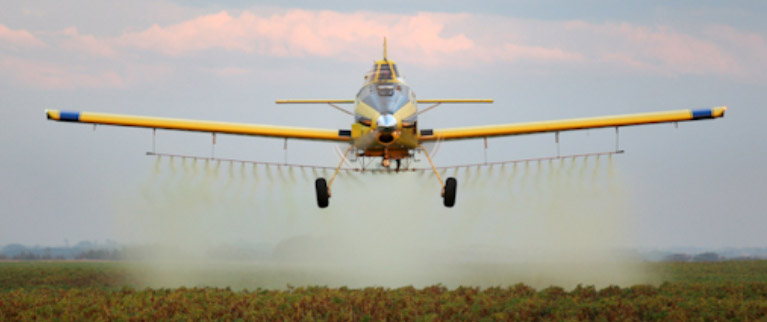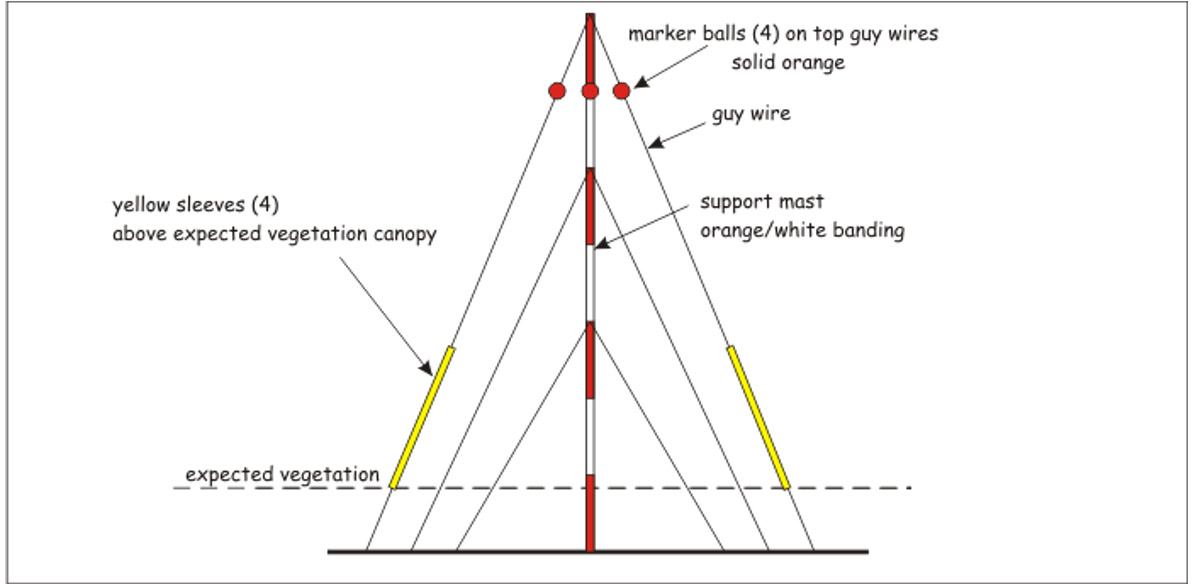Subject: Meteorological Tower (MET) Notification
| Issuing Office: | Civil Aviation, Standards |
|---|---|
| Document No.: | AC 601-005 |
| File Classification No.: | Z 5000-34 |
| Issue No.: | 01 |
| RDIMS No.: | 14711201-V5 |
| Effective Date: | 2019-05-06 |
Table of contents
- 1.0 Introduction
- 2.0 References and Requirements
- 3.0 Background
- 4.0 Discussion
- 5.0 Information Management
- 6.0 Document History
- 7.0 Contact Office
List of Figures
1.0 Introduction
- (1) This Advisory Circular (AC) is provided for information and guidance purposes. It describes an example of an acceptable means, but not the only means, of demonstrating compliance with the Canadian Aviation Regulations (CARs) and associated standards. This AC on its own does not change, create, amend or permit deviations from regulatory requirements, nor does it establish minimum standards.
1.1 Purpose
- (1) This Advisory Circular (AC) pertains to the submittal of location and height of meteorological tower (MET) installations so that this information can be included in a NAV CANADA listing and thus available to pilots doing aerial application.
1.2 Applicability
- (1) This document is applicable to the Wind Industry and, in particular, owners of MET towers that are installed to measure the wind resource.
1.3 Description of Changes
- (1) Not applicable.
2.0 References and Requirements
2.1 Reference Documents
- (1) It is intended that the following reference materials be used in conjunction with this document:
- (a) Part VI, Subpart 01, Division III of the Canadian Aviation Regulations (CARs) — Marking and Lighting of Obstacles to Air Navigation, Obstacles to Air Navigation, Sections 601.23 and 601.24;
- (b) Standard 621 of the Canadian Aviation Regulations (CARs) — Standards, Obstruction Marking and Lighting.
2.2 Cancelled Documents
- (1) Not applicable.
- (2) By default, it is understood that the publication of a new issue of a document automatically renders any earlier issues of the same document null and void.
2.3 Definitions and Abbreviations
- (1) The following abbreviations are used in this document:
- (a) AAF: Aeronautical Assessment Form
- (b) CARs: Canadian Aviation Regulations
- (c) GPS: Global Positioning System
- (d) MET tower: Meteorological Tower
- (e) TCCA: Transport Canada Civil Aviation
3.0 Background
- (1) Aerial application, sometimes referred to as crop dusting or crop spraying, involves low level flight for application of protection/fertilizer products from an aircraft. In as much as the flight is relatively low to the ground, objects such as MET towers can pose a hazard, even if marked. These towers can be quickly erected so as to be unknown to the pilot. The AC speaks to notification for MET tower installation and their decommissioning to NAV CANADA who will maintain a listing of MET towers.
Figure 1 – Crop spraying (Source: CAAA)
Text version - Figure 1 – Crop spraying (Source: CAAA)
Figure 1 is a photograph of an aircraft spraying a crop and having a height of about 3 metres [10 feet] above ground.
Figure 2 – MET Tower (marked)
Text version - Figure 2 – MET Tower (marked)
Figure 2 illustrates the marking applied to a MET tower: orange and white banding of the centre support mast; high visibility yellow sleeves on the outer guy wires installed above the expected vegetation canopy; and, orange marker balls installed on the guy wires near the top of the tower.
4.0 Discussion
- (1) MET towers are often erected in a short period of time. They may not, therefore, be known to the pilot doing aerial application or may be missed during initial reconnaissance, even if marked.
- (2) Obstacles to air navigation, as defined in section 601.23 of the CARs, include any structure that is higher than 90 m AGL and is located within 6 km of the geographic centre of the aerodrome; albeit there can be lesser heights in relation to obstacle limitation surfaces at airports. In accordance with Section 601.24 of the CARs, notification is provided to TCCA through use of the AAF which is in Appendix C of Standard 621. MET towers, away from aerodromes, tend to be less than 90 m in height, and might not be notified to TCCA. And if notified, there is a time factor before the completed AAF is copied to NAV CANADA.
- (3) Any installation of MET tower should be reported [including GPS location] to NAV CANADA's Landuse Program using the Land Use Submission Form.
- (4) Should the MET tower later be removed, a Notice of Removal should be submitted to NAV CANADA so that the object can be removed from the obstacle listing.
5.0 Information management
- (1) Not applicable.
6.0 Document History
- (1) Not applicable.
7.0 Contact Office
For more information, please contact:
Flight Standards, AARTA
E-mail: TC.Flights.Standards-Normesdevol.TC@tc.gc.ca
Suggestions for amendment to this document are invited, and should be submitted to the email address: TC.Flights.Standards-Normesdevol.TC@tc.gc.ca
Document approved by Pierre Ruel for
Robert Sincennes
Director, Standards
Civil Aviation
![]()
AC 601-005 - Meteorological Tower (MET) Notification
(PDF, 342 KB)

